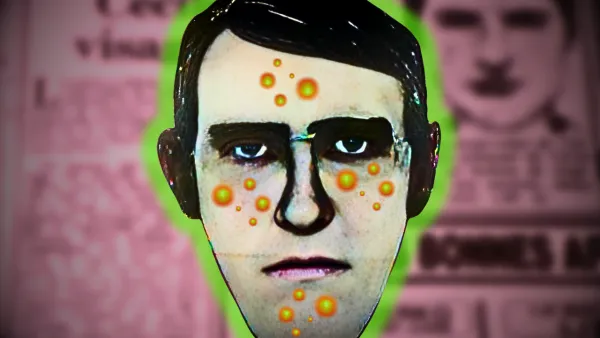Tavern Owner’s Disappearance Baffle Police: “Face and Head” Found In Wooden Box Of Decaying Farm House

(Ed Gein Part 1)
The following article contains graphic details of murder and dismemberment. Mature audiences only.
Local farmer Seymour Lester was the first to realize that something terrible had happened to Mary Hogan. The 55-year-old Pine Grove tavern owner had never left the front entrance unlocked when she wasn’t inside. He glanced down at his wristwatch, confused on where his friend could be; the time read 4:48pm. Lester propped open the door, allowing the daylight to flood into the poorly lit tavern.
He’s been a patron of Mary Hogan’s tavern since she opened it in 1949, and in all his times visiting the tavern, he’s never had to flip the lights on.
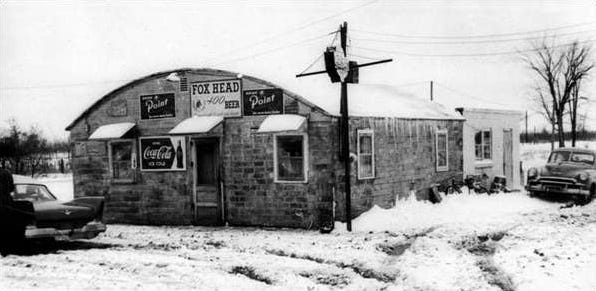
Searching for a switch, he noticed a hanging light in the middle of the bar that he could turn on with a pull chain. It hung above the table where he often saw Hogan sitting in her favorite chair, novel in hand, pausing occasionally to sip on her coffee as she waited to pour one of her customers another round.
Lester wandered through the dark tavern until he was sure that he was next to the table, but in reaching for the chain, his feet nearly shot out from under him; he hugged the table and recovered his stance.
The dingy light flickered once or twice before filling the room. Lester looked down at his feet to see what he nearly slipped on. It was blood… and there was a lot of it.
He wasn’t sure if it was Mary’s, but she was nowhere in sight.
Hoards Of Cash
Sheriff Harold S. Thompson of Pine Grove would process the murder scene, and even though Hogan’s dismembered head wouldn’t be discovered until years later, the proprietress was dead, as the large amount of blood “precluded the possibility of her still being alive.” A spent thirty-two caliber cartridge lay on the floor next to Hogan’s favorite chair, now overturned and painted in human blood.
Police surmised multiple men must have had dragged out the dead body, loading it into an idling truck. Not only because there were obvious drag marks through the streaks of blood leading to the back door, but also because Hogan’s large frame — weighing at least two hundred pounds — would be near impossible for one person to drag out alone.
Newsmen expected police to declare a motive for the abduction, but this would prove difficult; for when they probed into the past life of Mary Hogan, her story became more and more distorted.
Inside the back office, where the bookkeeping happened, police found a large stash of money tucked away inside candy and cigar boxes. More than $3,000 was discovered in paper bills — today’s value with inflation since 1954 would be over $30,000. Pine Grove’s population barely eked in the hundreds. It was a farmer’s town, and the yield provided just enough to keep a family alive. Nobody had that kind of money, especially not packed inside moth-eaten Hershey boxes.
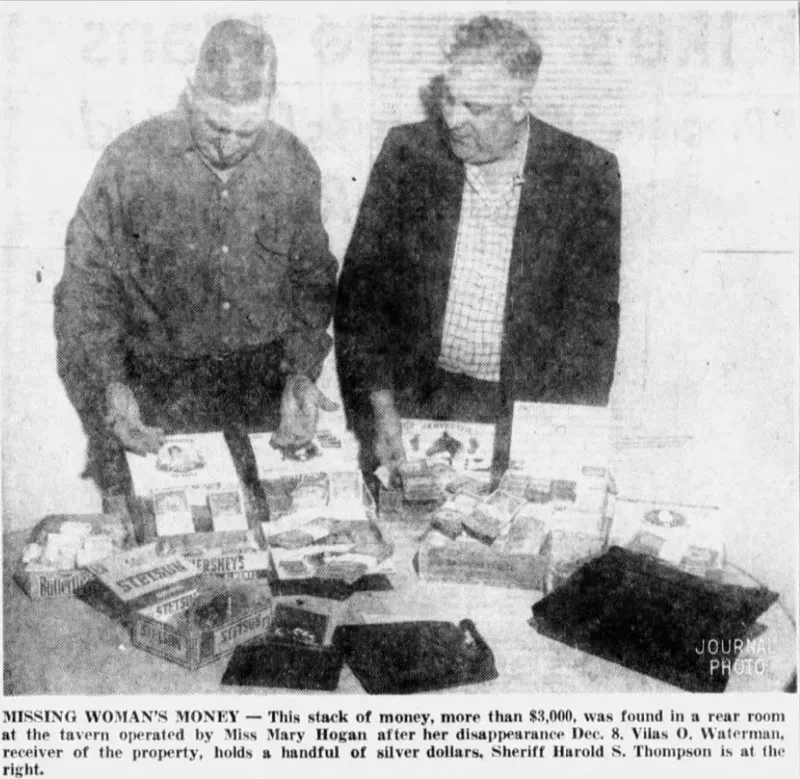
If police were going to find Mary’s abductor, they would first have to work out exactly who ‘Mary’ was.
Mob Ties
Like other immigrants at the turn of the nineteenth century, Mary Hogan boarded whatever ship would float her to America. She was filled with the hopes of new and exciting opportunities.
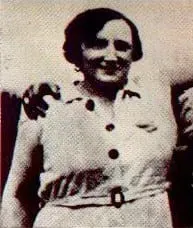
Officially born Mary Curran in 1901 in Germany, she would stamp her next life record on October 4, 1920, when she wed a coal miner named Joseph Medved. She and her new husband took up their marital home in Springfield, Illinois. Perhaps the relationship was violent, or perhaps Joseph was just a bore of a husband, but records show that Mary ditched him in 1922; she was officially granted a divorce three years later.
We know nothing else of Mary’s life until 1935, when she tied the knot a second time to a Louis Peck, whom she also divorced soon after, this time on the “grounds of cruelty.” It was during the marriage to Peck that Mary’s records become cloudy. Mary never took Peck’s last name, but instead began using the name of Hogan, which she later would use exclusively, even with government records. However, there is no record or known reason she assumed Hogan, though it is the name that was printed on her tavern licence issued in 1949.
The popular belief about Mary’s missing years speculate that, for the next fourteen years, Mary Hogan lived in Chicago, Illinois. She left no official record of employment, government assistance, or identification, but later told her patrons that she lived there during that time. Her existence, from what we know other than the above facts, is that this Mary Hogan took off from the big city to a small and obscure farming community, with a new name, and boxes filled with cash.
Perhaps, Sheriff Thompson surmised, Mary Hogan had a connection to the Chicago mafia, a belief that would be widely spread within town gossip and newspaper hearsay. She may have even worked under Al Capone, operating as a big city madam. Wouldn’t that be something?
Head In A Box
The disappearance of Mary Hogan baffled police and Pine Grove citizens for years, each anniversary bringing a renewed interest in her case. In the end, Mary Hogan was found… well, at least they found her head. In fact, Police were looking in a local home regarding the disappearance of a nearby Plainfield resident, Bernice Worden, who herself also owned and ran her own business.
The Pine Grove and Plainfield Sheriff’s offices would join in releasing news regarding Mary Hogan’s severed head found in the crude wooden box with one statement:
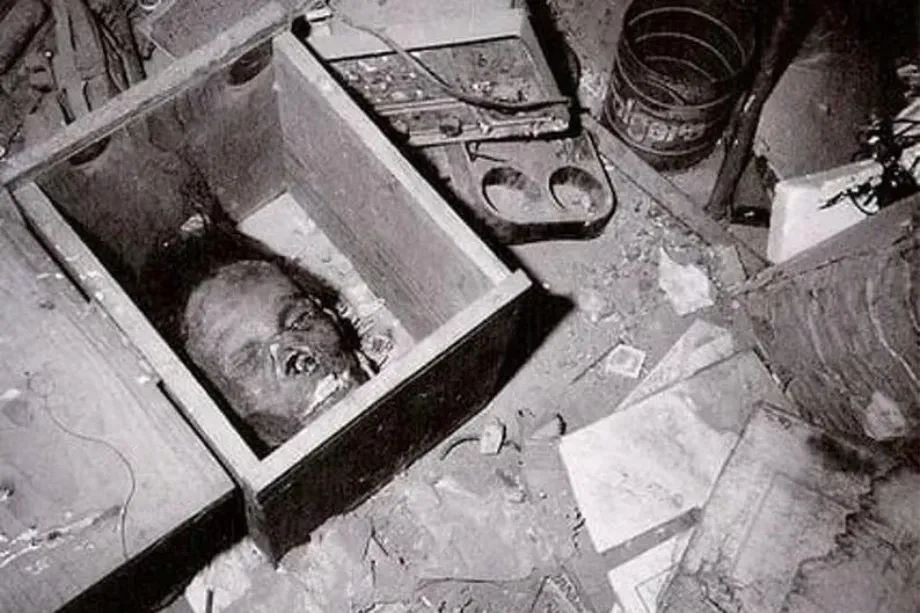
“We have found the face and head of Mary Hogan among other [unspeakable] objects inside Eddie Gein’s farmhouse.”
This is the first part of a multiple article series that I will put out on Ed Gein, ‘The Plainfield Ghoul’. Be sure to follow me if you want the full story of the life and crimes of the killer that inspired the movies Psycho, Texas Chainsaw Massacre, and Silence of the Lambs.





